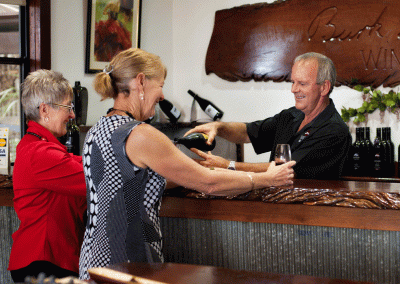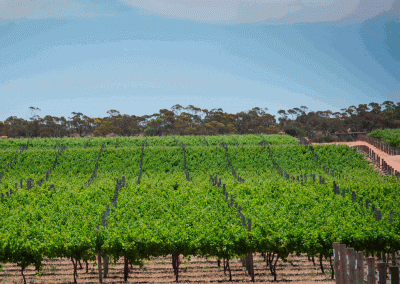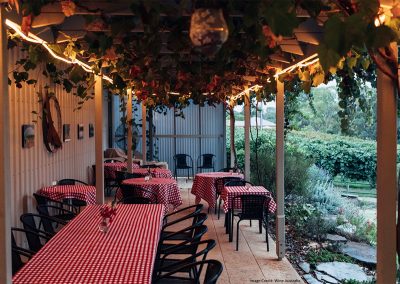
LOWER MURRAY WINERY REGION
A visit to the Lower Murray wine zone will bring you to Riverland, an irrigated wine region along the Murray River. Riverland is actually Australia’s largest wine-producing region, accounting for around half of South Australia’s grapes and one quarter of the grapes in Australia. With a focus on both quality and quantity, cabernet sauvignon, chardonnay, shiraz and merlot have won awards in the region, and new Mediterranean varieties are also beginning to shine. A visit to the Lower Murray zone will find a hot and continental climate, with long days of sunshine.
Riverland
The Riverland provides the fruit for more than sixty percent of South Australia’s total wine production and around a quarter of Australia’s. Much of it is blended, creating full-flavoured, generous and approachable wines under a variety of well-known brands. All of Australia’s major wine producers source grapes from the Riverland, while more than seventy percent of production is exported.
Alongside the big industry names are a raft of family businesses and a growing band of small winemakers crafting organic and biodynamic wines, making the most of the region’s reputation for having very low levels of grapevine pests and diseases. The region is becoming well-known for varieties including petit verdot, viognier, vermentino, nero d’avola, fiano, petit manseng and montepulciano, to name a few.
These varieties thrive in the warmer climate, revealing full body, unique characteristics and flavours. They are grown alongside some of the classic older Mediterranean varieties, such as mourvèdre and grenache, that are once again popular as blenders.
The traditional shiraz, cabernet sauvignon and chardonnay can be found as well, of course. The secret, in this warm sunny region, is to limit the yield to maximise potential, a technique perfected by the region’s premier wine company Angove’s, who have also committed to producing certified organic wines, an acknowledgement that future wine drinkers will be more informed, better educated and arguably understand the true costs of food production.
RIVERLAND








